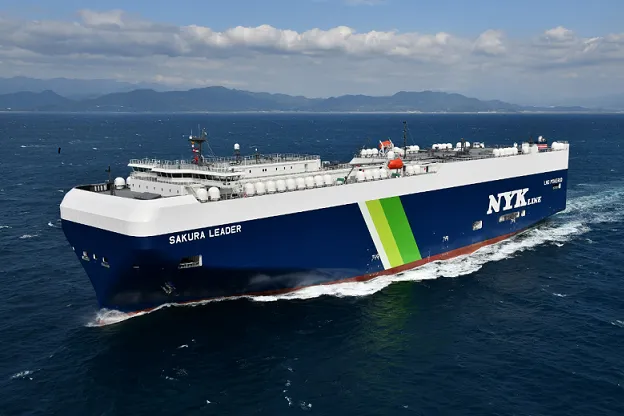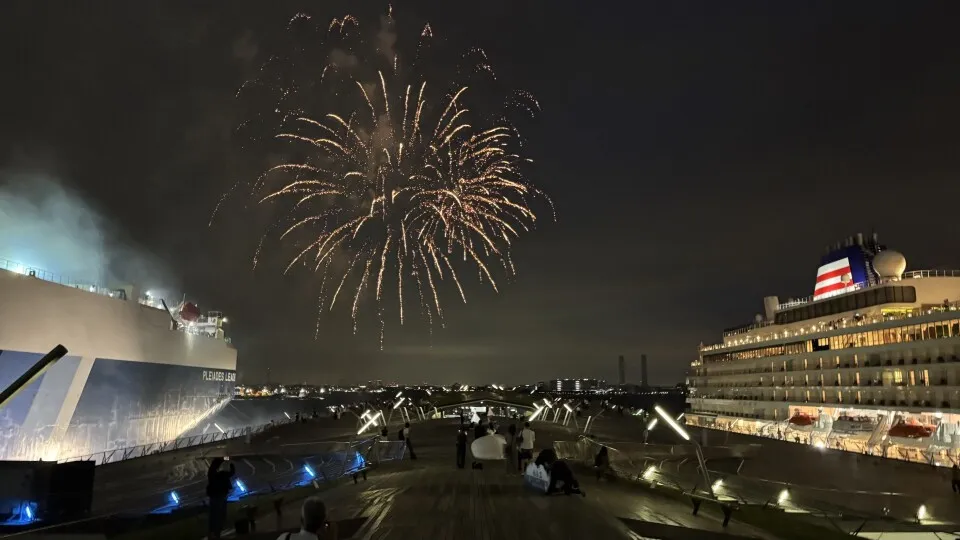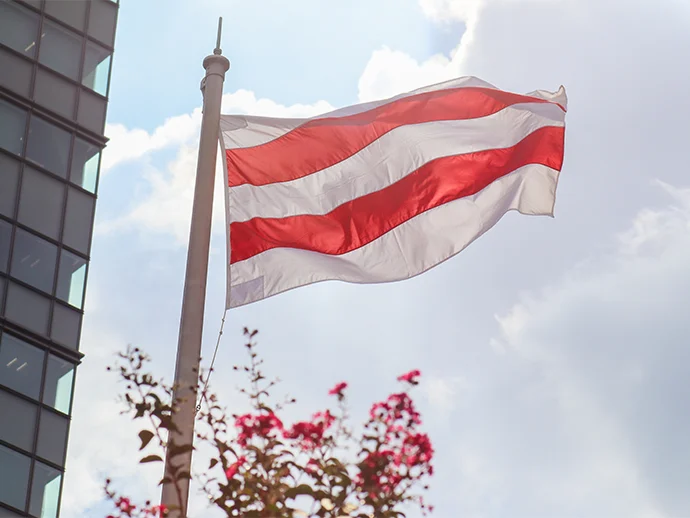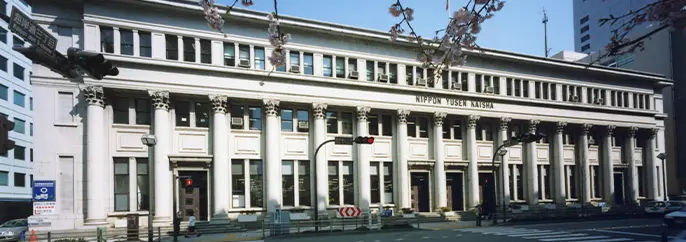Diary of Ocean Breezes: Historical Items from the NYK Maritime Museum
Released : Jun. 24, 2025
Updated : Oct. 20, 2025
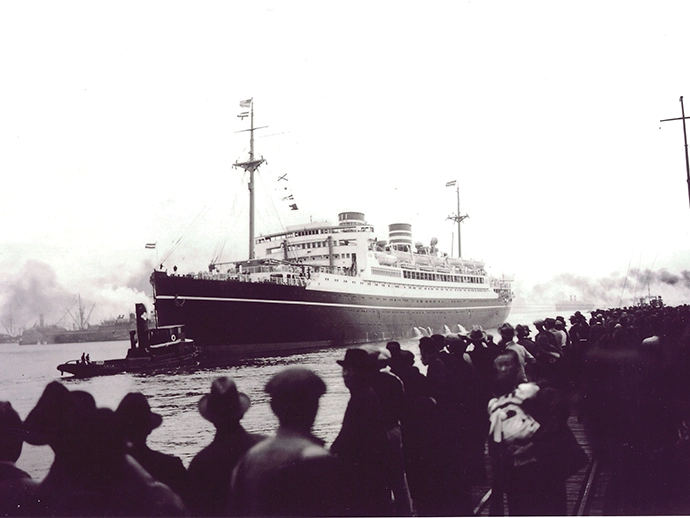
The NYK Maritime Museum introduces the history of modern Japanese shipping from its early days to the present through the lens of NYK Line’s corporate history. In this article, we showcase historical items from the museum's collection that offer a glimpse into the past.
Contract for Transporting Bombay Cotton

Contract for Transporting Bombay Cotton
Date: January 25, 1905
Issuer: Japan Spinners' Association
Chairman: Takeo Yamanobe
Recipient: Nippon Yusen Kaisha (NYK Line), Renpei Kondo (NYK’s third president)
NYK Maritime Museum Collection
This contract for transporting Bombay cotton is a historically significant document that offers valuable insight into Japan’s development during the Meiji era. “Bombay” refers to present-day Mumbai, India, and “cotton” here denotes raw cotton, a fundamental resource for the textile industry.
For Japan’s textile sector, which played a critical role in supporting the country’s modernization, securing a stable supply of raw cotton was a vital challenge. In 1893 (Meiji 26) at the request of the Japan Spinners' Association, NYK opened a shipping route between Japan and Bombay (now Mumbai). This route enabled the stable import of Indian cotton and greatly contributed to the growth of Japan’s core industry — textile manufacturing.
Addressed to Renpei Kondo, NYK’s third president, this contract was issued in January 1905 (Meiji 38) by the Japan Spinners' Association more than 10 years after the opening of the Bombay route. At that time, Japan was embroiled in the Russo-Japanese War, during which many commercial ships were requisitioned for military use. Specifically, 72 NYK vessels totaling 260,000 gross tons were commandeered, resulting in a ship shortage and the temporary suspension of the Bombay route. To mitigate this, the contract included provisions for the chartering of foreign vessels to ensure the stable transport of cotton.
As such, this document stands as a valuable record of NYK’s efforts to sustain Japan’s industrial growth even amidst the challenges of wartime conditions.
Passenger Guide “Yusen Zue”
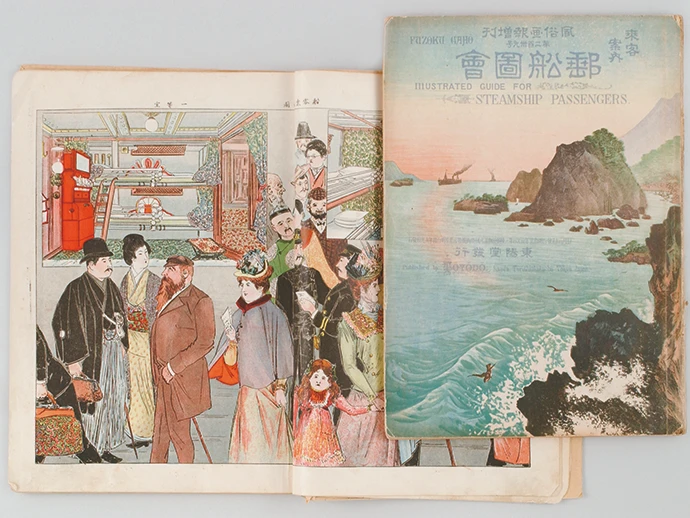
Passenger Guide “Yusen Zue”
Fuzoku Gaho Special Supplement No. 239
Published in 1901 (Meiji 34) by Toyodo
NYK Maritime Museum Collection
Fuzoku Gaho (Illustrated Customs and Manners) was Japan’s first graphic magazine. It was published by Toyodo, a publishing and printing company based in Nihonbashi Fukiyacho (present-day Ningyocho, Tokyo). From the promulgation of Japan’s constitution in February 1889 (Meiji 22) until March 1916 (Taisho 5), during World War I, the magazine released 478 issues and 518 volumes, including special editions.
One notable special edition, “Yusen Zue” (Illustrated Guide to NYK Ships), was published in 1901 (Meiji 34). This edition features a travel report written by a journalist who experienced life firsthand aboard Kasuga Maru, one of NYK’s passenger-cargo ships operating on the Australia route. The guide provides a vivid account of the boarding procedures, onboard life, and the vessel’s facilities, including descriptions of first- through third-class cabins, the dining room, the captain’s quarters, and more. Western customs and etiquette, which were still unfamiliar to many Japanese at the time, are also introduced through colorful illustrations tailored for Japanese readership.
The hand-colored lithographs portray vibrant scenes of life aboard the ship, from elegant dinners in the first-class dining room and gentlemen enjoying games in the smoking room to women conversing on the deck while dressed in Japanese and Western attire. Additionally, the illustrations portray everyday scenes involving crew members, such as sailors cleaning the decks and loading cargo, as well as uncommon occurrences like local merchants approaching the ship while in port to sell their wares directly to passengers.
From cabin interiors to passengers’ clothing, this guide offers a valuable glimpse into the lifestyle of sea travel in the mid-Meiji period.
Model of Asama Maru
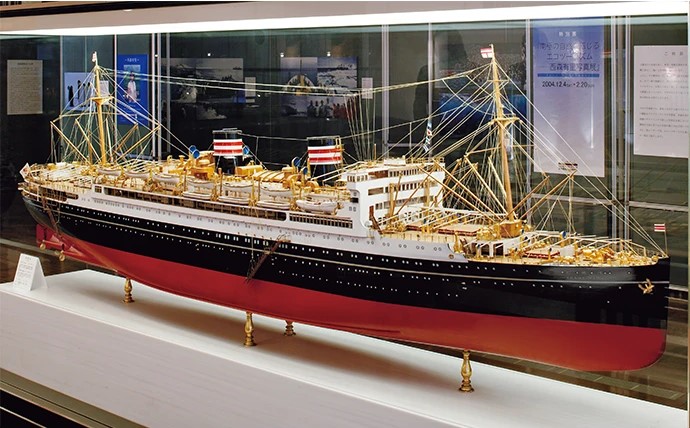
Model of Asama Maru
Dimensions (including display case): 420 cm (L) × 96 cm (W) × 200 cm (H), Scale: 1/48
NYK Maritime Museum Collection
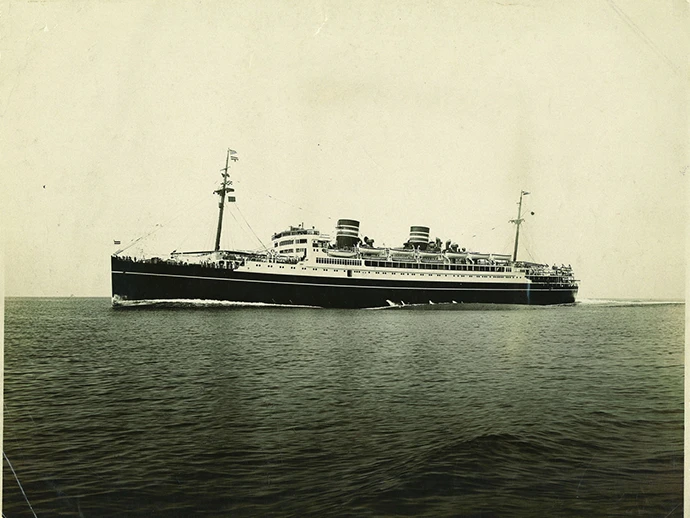
Length: 178.0 m, Gross tonnage: 16,947 tons
Speed: 20.71 knots, Completion date: September 15, 1929
Builder: Mitsubishi Shipbuilding Co., Ltd., Nagasaki Shipyard
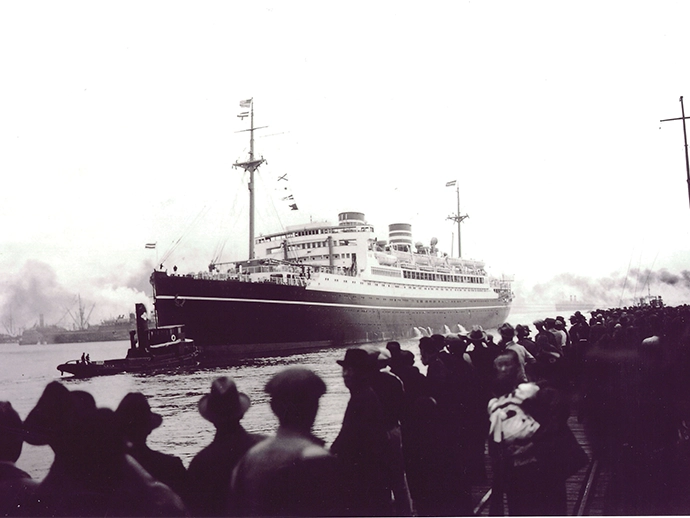
A farewell scene featuring Asama Maru
Completed in 1929 (Showa 4), Asama Maru was one of Japan’s most luxurious passenger liners of the early Showa era (1926-1989). Together with its sister ships, Tatsuta Maru and Chichibu Maru, Asama Maru operated on the San Francisco route and was hailed as the "Queen of the Pacific." During World War II, the vessel further distinguished itself by serving as an exchange ship facilitating diplomatic repatriation between Japan and the United States.
This model was crafted by the Momiyama Ship Model Studio, a prolific prewar model-making workshop, using official blueprints from the ship’s construction. So meticulously detailed are the fittings that its creator, Sakujiro Momiyama, once declared it to be “perhaps the most precise ship model in the world.”
The hull is carved from seasoned Japanese cypress, complemented by mahogany ladders and handrails. Deck components are fashioned from gold-plated brass, while lacquer is used for the hull's paintwork. The model's craftsmanship is so elaborate and refined that it is said to be impossible to replicate using modern techniques. Its weight and presence leave a powerful impression on all who view it.
Such models were typically displayed at shipping agents' offices around the world to promote services and newly built vessels. However, even when production records exist, many of these models have since gone missing or are unaccounted for today.
Note: The NYK Maritime Museum has been temporarily closed since April 1, 2023. We plan to reopen in the spring of 2027. Updates will be posted on the official museum website
once the schedule is confirmed.
